Trending
Opinion: How will Project 2025 impact game developers?
The Heritage Foundation's manifesto for the possible next administration could do great harm to many, including large portions of the game development community.

Featured Blog | This community-written post highlights the best of what the game industry has to offer. Read more like it on the Game Developer Blogs or learn how to Submit Your Own Blog Post
This blog post gives you tips and tricks on how to design great levels using examples from Super Mario Maker. This is a post for those interested in game development.

Originally posted on the Shadow Puppeteer development blog.
Level design is about being creative, engaging the players and leading them through your game. Depending on the type of game, the way you design levels and what tools you use may vary.
What happens when indie game designers are challenged to make a level using Super Mario Maker? Which lessons can they teach other budding designers? That is exactly what we are exploring in today’s Development Blog.
Read more...
We had an experience a few weeks ago that inspired us to write this Blogpost. We were invited to showcase Shadow Puppeteer at EGX at Nintendo’s stand as one of the Nindies this year. A few weeks before departure we were approached with an interesting challenge: Could we make a level using the new game Super Mario Maker and present it at EGX. Just as when life gives asks if you want delicious chocolate cake we said “OMG YES!”.
For those who do not know; Super Mario Maker is a game where you can create your own Super Mario levels, share them online and play the levels of other creators.
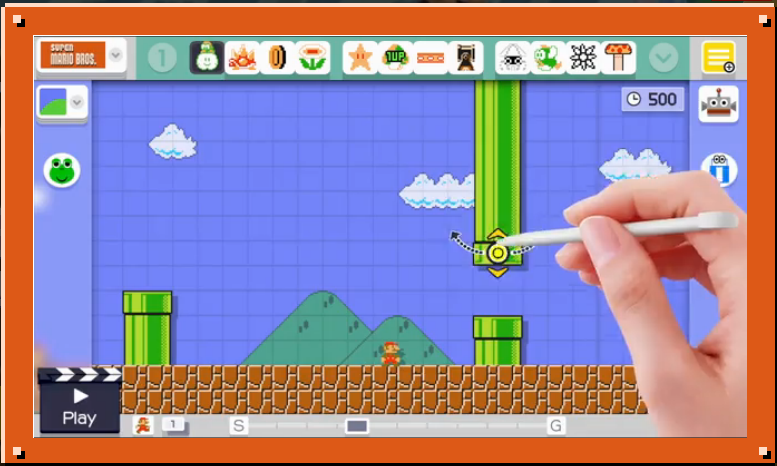 It is as easy as it looks
It is as easy as it looks
This was our first time trying Super Mario Maker and we were not sure of what to expect. We found that this kind of editor program can be a good way of getting into the process of level design and so we want to take this opportunity to share some advice on the topic. Using our development on the Super Mario Maker level “Super Shadow Puppeteer” as an example, we are now going to go through our preferred steps in level design.
Disclaimer: Personal preferences and experiences may vary
Anyone can be a “level designer” and many people want to be. Being a GOOD level designer on the other hand is not as easy. Of course most games will have completely different focus, goals and styles but a lot of the steps are, at it’s core, the same.
This can take some time, but when you are completely familiarized with the possibilities, you can create better and more creative levels.
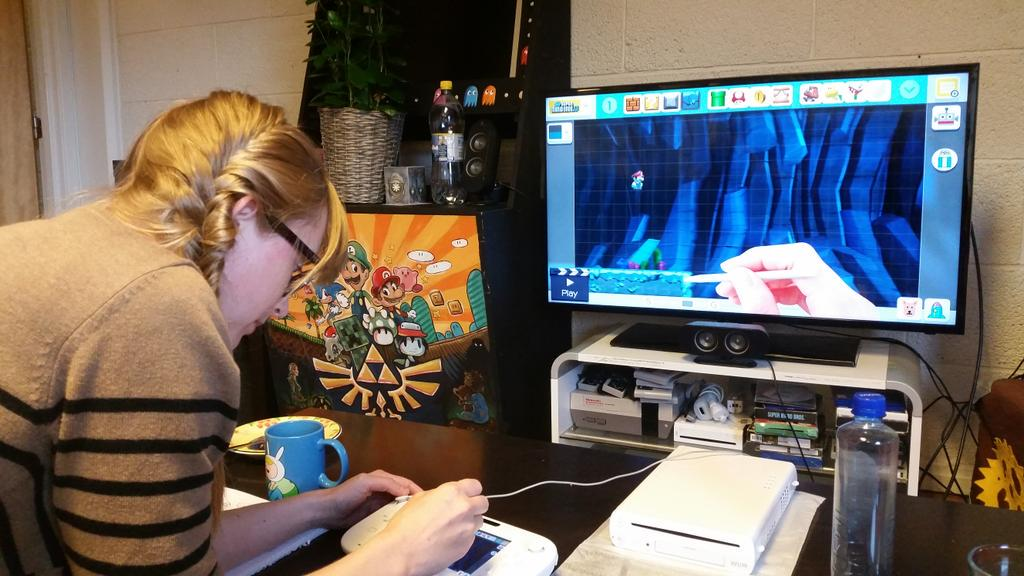 Marianne working on making a level with Super Mario Maker
Marianne working on making a level with Super Mario Maker
In SMM you have to gradually unlock styles, items and effects. Having to do this might seem like a hassle, but the game wants to give you the chance to get properly familiarized with your options. By trying out every item and experimenting with them, you will be able to unlock these things faster.
Tip: Go wild, place out loads of items, don’t worry about making things “perfect” in this stage. The more items are placed out in the level, the faster the unlocking process goes.
You want to think about what kind of people you want to play your game/level. How old are they? What are they looking for in a game? Are they experienced or inexperienced? Do they want to explore, do they want a challenge, or do they want to collect everything?
This is of course a huge process including the choice of platform, genre etc. For SMM it gets a bit less complicated, although it does not become any less important.
What kind of level you want for SMM depends on what kind of players you will have. Will you target the hardcore people who want a challenge or the more relaxed Mario-fans? Difficult is not always the same as "fun". A creator may enjoy seeing players fail when trying the level, but the player may end up with frustration. Decide on the player type and the level of difficulty.
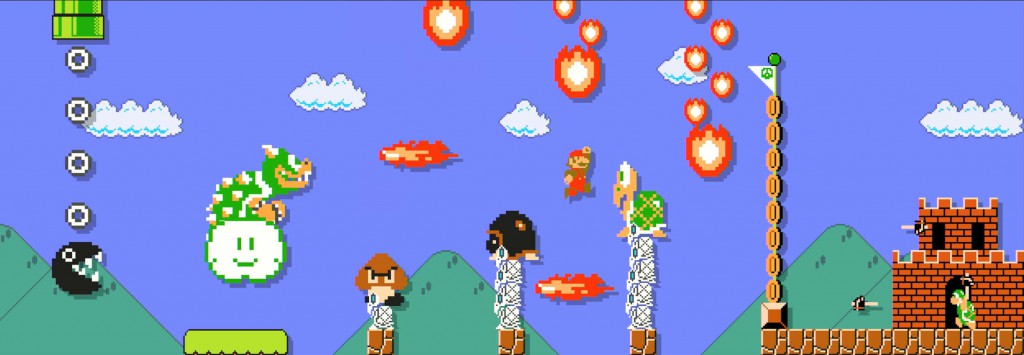 Not everybody's cup of tea
Not everybody's cup of tea
Feel free to challenge the players, but remember to find a good middle ground between frustrating and challening. Super Mario Maker have just announced a free update due on the 4th of November that will, amongst other things, add checkpoints in the game!
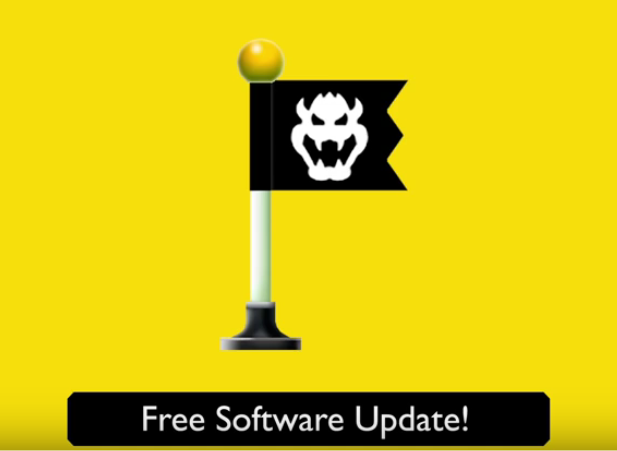 Glorious!
Glorious!
Still, long levels shouldn’t be too frustrating, and super difficult levels should be short/ have well placed checkpoints, and have something in them to motivate the players.
Cool tip from IGN tip-site: "You can also create short-cuts that players discover after getting to a halfway point. For example, a pipe halfway through the level could show a way to get back to the beginning -- and vice versa."
For our level we knew that the main crowd would be the people at EGX - a consumer- focused game conference. Wanting to reach our own fans, we decided to follow the vision of Shadow Puppeteer: Not too difficult, more fun than frustrating, making the player feel clever. Having fun without too much risk of dying. Giving the player a challenge in movement and puzzles rather than avoidance of death.
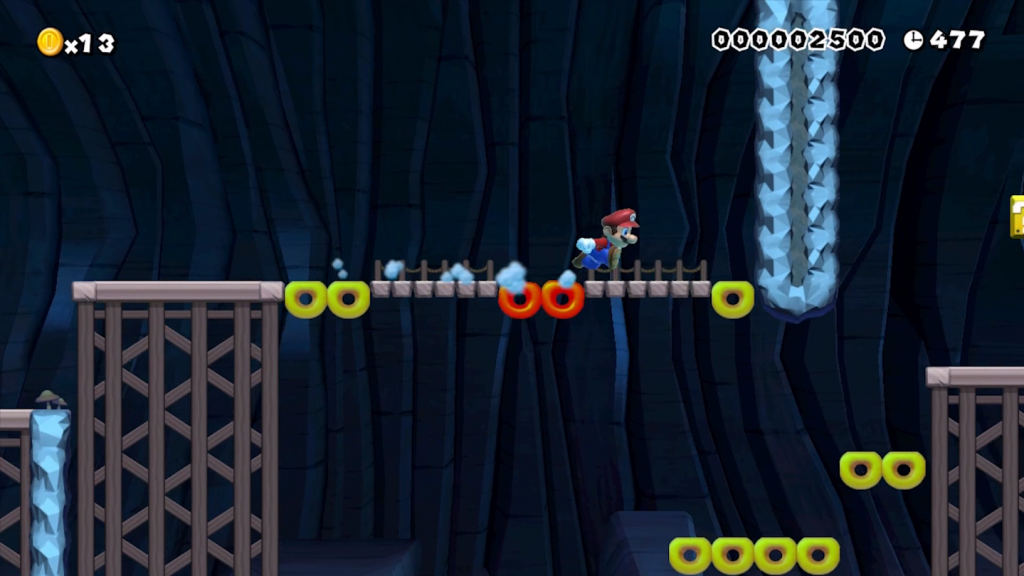 You know it's safe, still there is a thrill in having to drop voluntarily
You know it's safe, still there is a thrill in having to drop voluntarily
Choose a style and a few mechanics - build everything from that. What will the main verbs be of your level? Jumping, sliding, shooting, ducking, exploring, solving riddles.
Many people will be worried about not having enough variety in the game. The important thing is to focus on depth, not just complexity. You can make a great game, only focused on one mechanic . Make sure that you have explored that one mechanic as much as possible, then explore it some more. Then look at adding other mechanics.
In SMM it might seem like you have limited options of what you can focus on, but you would be surprised of what you might be able to make if you just get creative. You could probably make something way out there, that no one would ever think was possible.
 Come on, we challenge you
Come on, we challenge you
For our level we thought it would be cool to make a level reminiscent of Shadow Puppeteer. We were attending EGX to showcase our game after all.
The core of Shadow Puppeteer lies in synchronized platforming and riddle solving between two people. Using lights and shifting gravity as a major diversifier. As SMM does not have 2 player mode, light mechanics or shifting gravity we felt a bit restricted.
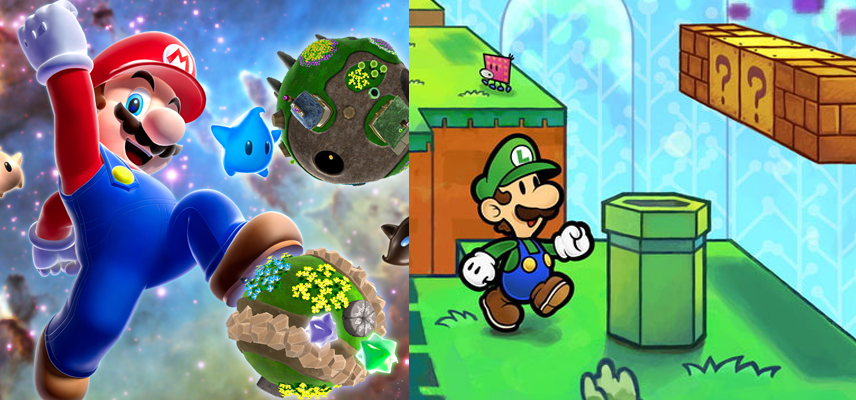 Maybe you could add these styles? Nintendo...? *fingers crossed*
Maybe you could add these styles? Nintendo...? *fingers crossed*
But the Super Mario series and Shadow Puppeteer share some similarities in gameplay and we found a Mario-style with a world that could provide us with the right look.
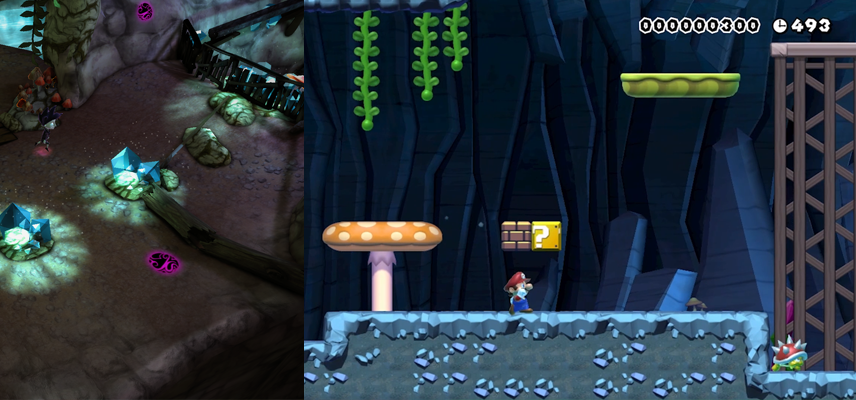 A cave with crystals, mushrooms and wooden constructions - Perfect!
A cave with crystals, mushrooms and wooden constructions - Perfect!
Just like a symphony has different movements with distinct feel and tempo, you want to create a dynamic level “narrative”. That is to consider the player’s experience throughout the level. What do they feel in the beginning? What about later? Their experience should develop and their mood change to give them a rewarding and satisfying experience.
There is a typical formula in level design: First you introduce a gameplay element, then you repeat the action, letting the player get used to the mechanic, before expanding the use or variety. After several of these introductions, you can put the player to the final test (usually a time trial or boss-level, but be creative).
For our level we wanted the experience and difficulty to mirror Shadow Puppeteer.
Taking inspiration from specific levels, we created a main level that was all about casual exploration, and a sub - level that imitated two thrilling chase sequences.
The sub - level was intended as a direct contrast to the main level, although the level of difficulty is not that different. The perceived danger and threat is bigger than it actually is.
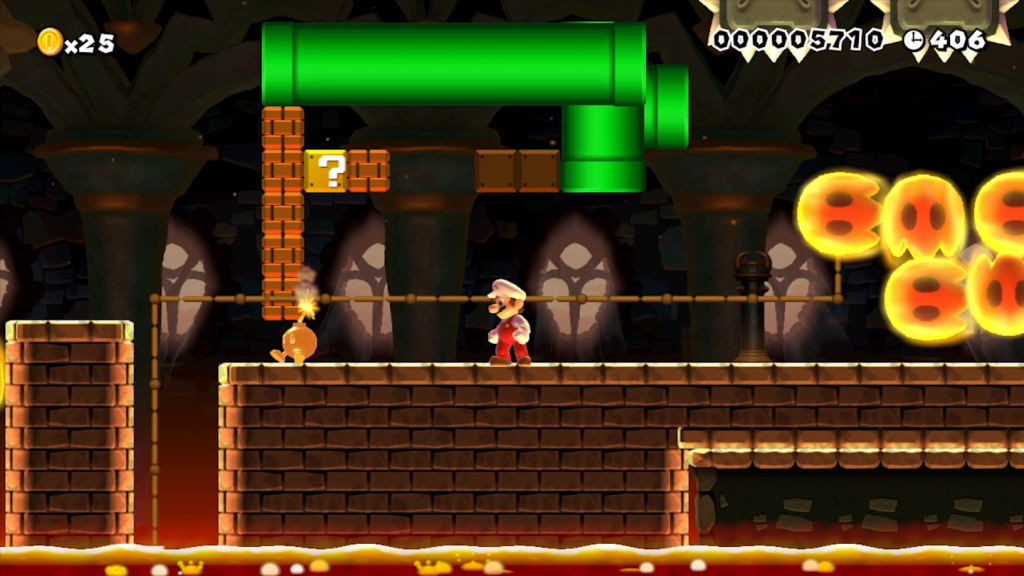 No, no... nothing to worry about
No, no... nothing to worry about
With step 3 and 4 in mind, you probably already have some great ideas for sections of gameplay and for an overall flow. Sketching this out on paper is a quick and easy way to plan the level, before making it.
You have to realize, though, that you will not be able to plan every brilliant idea beforehand. Leaving some room in the level in between sections of planned gameplay is advisable. It gives you room to be inspired by the tool you are using. As you set up planned gameplay elements in the level you will most likely get some good ideas. If you want to plan things properly, you could just write down what kind of in-between gameplay would be best suited for your “narrative.” Like if you just gave your player a challenge, giving them a reward or something fun but easy can be a good way to give them a breather before the next challenge.
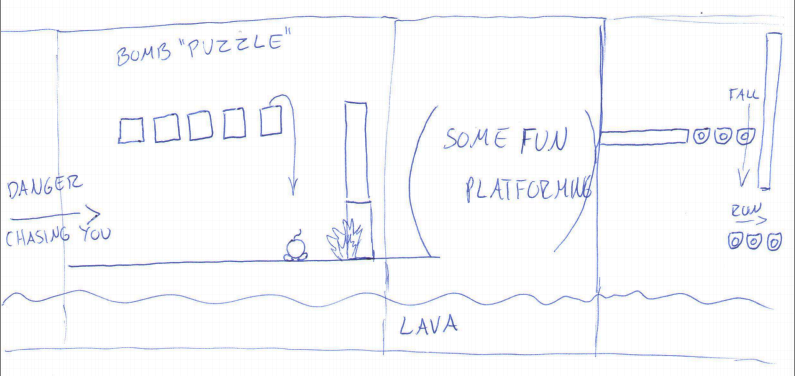 It's about communicating an idea, not winning an art award.
It's about communicating an idea, not winning an art award.
For our level we chose unique styles for the main and sub - areas. The Main level had organic platforms, some static and some dynamic. It featured vines to swing from and donut blocks to give a little simple thrill, and a few small, shelled enemies. This area had several routes to choose from and many nice little treats to find.
 Main level: Cave world || Sub level: Industrial world
Main level: Cave world || Sub level: Industrial world
Our sub - level was dominated by “man-made” things: bricks and pipes, walls and windows. We added lava and bombs as central elements to stress the player and to challenge them under pressure. Here we were very careful to make sure that the player was stressed, but not very likely to die; like providing mushrooms where we knew they might take a hit from some Twompers.
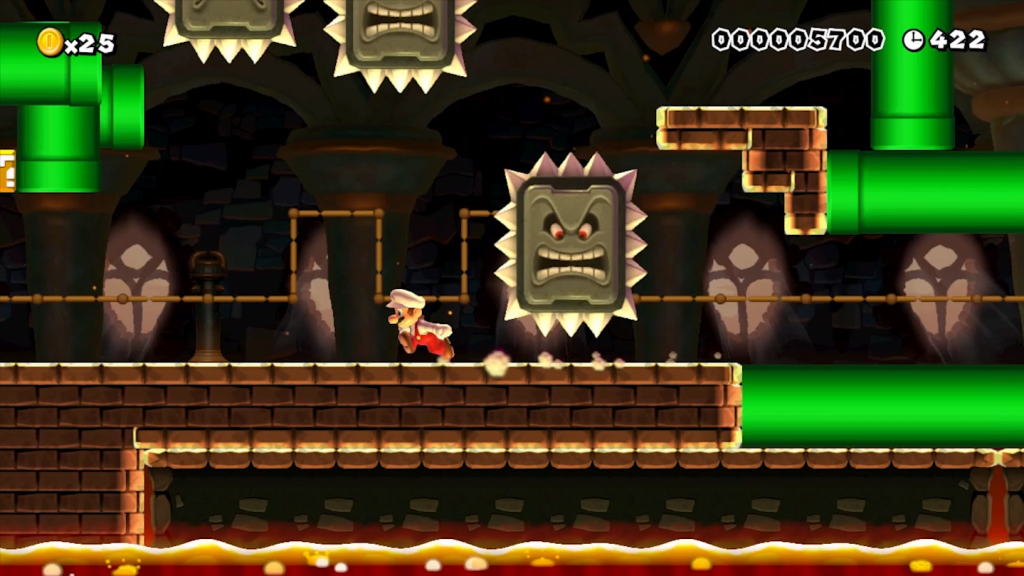 You know something bad will happen when the game gives you boosters
You know something bad will happen when the game gives you boosters
Make sure to play through the level several times and see if the flow feels right and the difficulty is appropriate. Get other people in that have never tried your level before. You will learn a lot from how they choose to progress, and from where they end up failing.
Super Mario Maker has a really good setup here, going into the level editor every time you die and letting you play from where you last left off. It really makes the process of tweaking and polishing easier and more enjoyable.
Add in extra elements here like coins to guide the player and decoration to make the level look nicer. Some extra rewards can also be added to slow the players down or give an extra optional challenge.
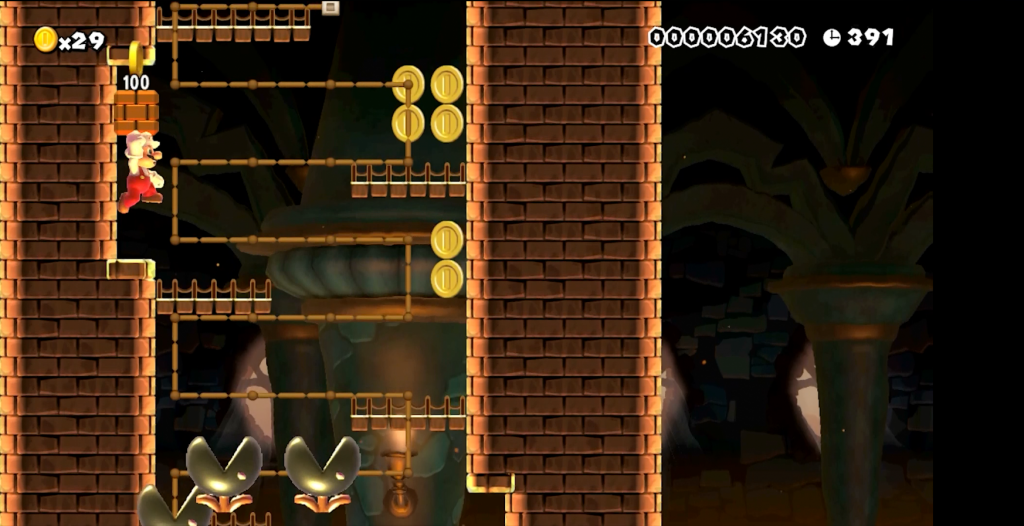 Yes I might be chased by a horde of Chompers, but what about my coins?!
Yes I might be chased by a horde of Chompers, but what about my coins?!
Designing a level can be more than just messing around in an editor, but how you choose to go about it is up to you. The important thing is to think about what kind of experience you want players to have, understanding their preferences and to always be open for iterations.
We were quite happy with our Super Mario Maker Level and had loads of fun making it. We hope that our examples have been helpful and inspirational. If you wish to try out
“Super Shadow Puppeteer” you can find it here:
If you have any level design tips or strategies that you want to share, or have an amazing Super Mario Maker - level that you want us to try out, please leave us a comment.
We would love to see levels going for different genre styles.
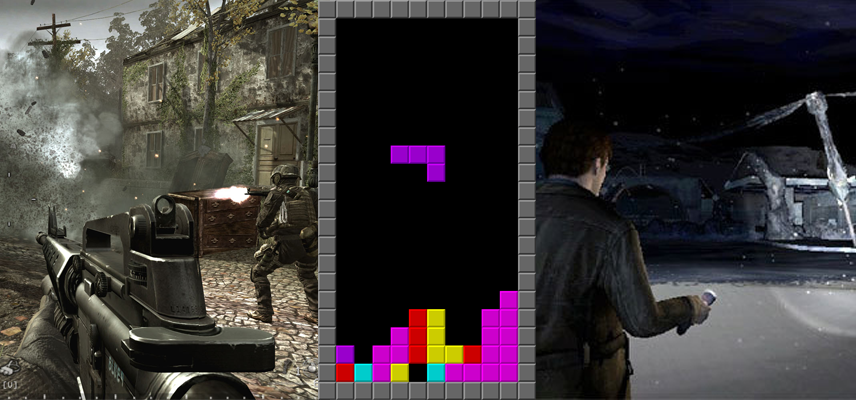 We double challenge you
We double challenge you
Read more about:
Featured BlogsYou May Also Like